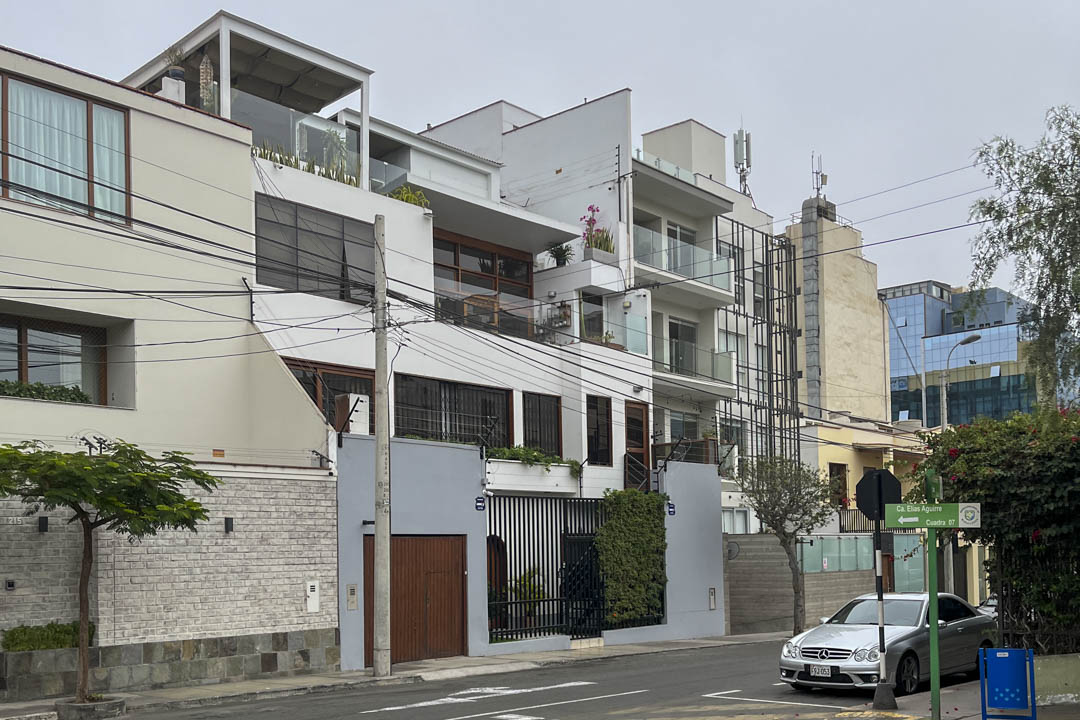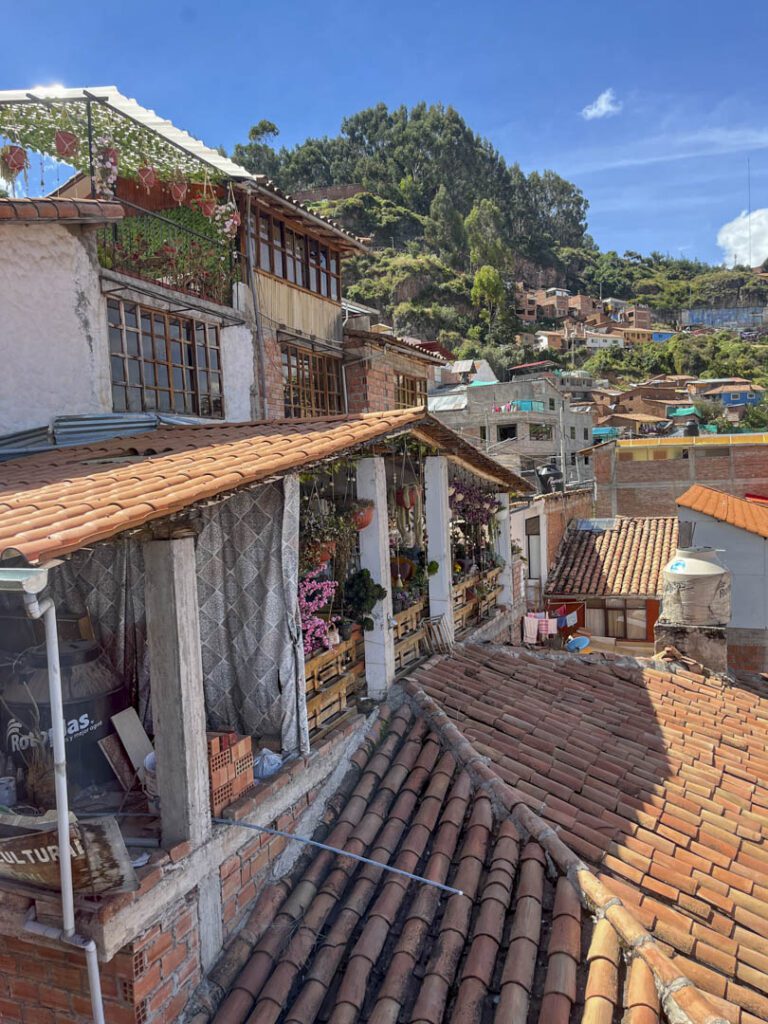
This past month, I had the opportunity to travel to Peru. I am always grateful for the opportunity to travel because it broadens my world and introduces me to people both different and similar to me. Not to mention, I get to try new foods (like alpaca!). Of course, while I was there, I couldn’t help but look at the architecture. Below are snippets of the designs and structures that caught my eye.
Lima

My first stop in Peru was to Lima. Lima Architecture varies from district to district, but the architecture that I saw in Miraflores, a more touristy and commercial district, was more similar to what I’ve seen in U.S. cities. Along the Miraflores Malecón (Direct translation: “breakwater”. You can think of it like a boardwalk or costal path on top of a cliff by the ocean.), there were beautiful parks, sculptures, and a butterfly garden path.

City view from my window.

Fun shapes and color accents.

In the middle of the four lane road, there was a beautiful tree-lined path for walking, biking, and sitting on the benches.

The buildings closer to the coast were especially colorful.
Cusco

It wasn’t just the architectural design of the buildings that I was fascinated by. I fell in love with the narrow twists and turns of the Cusco streets. Although this sort of city layout is not as natural for me to navigate, it always gives me a sense of exploration and curiosity. And even though the streets and buildings weren’t laid out into a squared grid, I was pleasantly surprised to be able to locate myself by day 3 of walking around. … but boy the 11,000 ft. altitude and hills did not make walking around easy!
The building shapes weren’t shapes I see in Harrisonburg, or anywhere in the U.S. that I’ve visited. My mind was never bored as my eyes traveled the lines, jumping from one building to another.


The buildings around my Airbnb reminded me of this ink drawing that I was working on, and they gave me inspiration to complete it.


I have never seen round, concrete landings like this that seem to float outside. These were a common sight.


Spectacular detailing on a church in Plaza de Armas, Cusco.
Sacred Valley
Wow, this valley was sacred indeed. Our guide, Will was fantastic and emphasized that he was giving us an etnohistoria (translation: ethnohistoric) tour of the Inca locations, meaning the history he told us centered indigenous people’s perspectives, documents, culture, and oral history, etc., instead of history written by the white, European perspectives. He encouraged us to approach learning that day with an open mind and “blank page.” Learning from the Incan people’s perspectives helped me to understand the importance and purposes behind the architecture we visited.
This is so important for learning about cultures different from our own, especially when the history we have heard about a group has not been from them. This is important in architectural practice as we design with communities.
Architecturally, the landscape, building, and community design were expertly created to fit with the landscape and topography. Descriptions are beside each picture below.
As our guide taught us to do, I say thank you to these sacred mountains that we traveled in that hold these sacred places.

Ollantaytambo: A beautiful town within the mountains that has Incan ruins. Some of the Incan buildings in the mountains were made to store food for the years that El Nino caused a dry season in this valley. These buildings were strategically oriented towards the wind. Incans carefully designed holes in the building to allow for airflow from the wind that would prevent mold during years of storage.

The extensive stepped terraces at Moray were designed and used by the Incans for agricultural research. By planting on the different levels which varied in ph levels and other conditions, the Incas developed over 4,000 different potato varieties and hundreds of corn varieties!

Salineras de Maras, or The Salt Mines of Maras, were designed on the sloping landscape with an intricate network of canals. The water on each flat slowly evaporates in the sun and the remaining salt is harvested. They are still in use.

Massive stones on top of the structure in Ollantaytambo had portions that jut out to fit together, much like Legos.
Arequipa

Arequipa is a city surrounded by the Andes mountains and the volcano, Misti. The buildings in this city were again full of colors and shapes that I don’t see everyday in the U.S. There were also stunning churches with intricate carvings and lush parks scattered throughout the city.





Spiral staircase and rounded landing that I saw in Cusco too.

Of course, trying lots of yummy food with my family.
A question posed to me, now posed to you:
Waiting for my delayed flight at the Lima airport (at 1am), I had a conversation with a man I met in the food court that spanned everything from religion to culture to language to architecture. He asked me if there was anything like Machu Pichu and other structures from indigenous groups in the U.S. I was stumped. He pointed to the pyramids in Egypt and Tikal in Guatemala and asked why we didn’t have things like that.
I assume there are many reasons why I couldn’t think of any such locations or structures: my European ancestors intentionally and strategically destroyed elements of indigenous culture, which included architecture, as a way of assuming power? Yes. Was it just not a part of my school curriculum? Probably. Maybe the nations that lived in the now U.S. used materials that were more disintegrable? I don’t know enough about that. Maybe the groups were more nomadic? I don’t know enough about this either. Was it the fact that I was trying to speak in Spanish at 1am? Yeah, probably a little bit of that too.
I’m curious, do you know of any places? Let me know in the comments.
*Edit: Later I googled Indigenous structures in the U.S. and low and behold, there are many! Check out a few cultural, architectural sites here.
Blog written by Asha Beck




